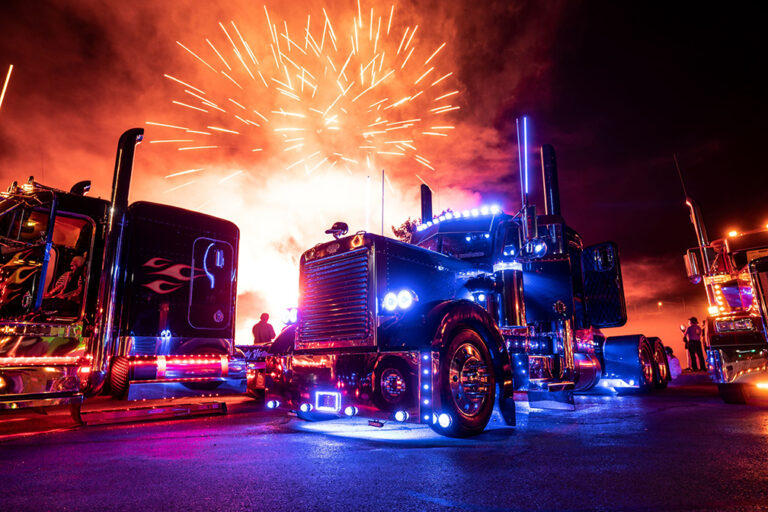Cross the state line into North Carolina and you’re likely to see signs that instruct motorists to “burn headlights when using windshield wipers.” In the 21st century, it’s easy to associate the word “burning” with something you DON’T want to see (or smell) when the lights are turned on.
Travel back to the 19th century, however, when all light was created by burning something, and the phrase makes a bit more sense.
Homes were lit with candles or kerosene lamps. Horse-drawn coaches often had lanterns hanging from them to light the way. When automobiles appeared in the 1880s, those that were equipped with headlamps used devices that burned oil, kerosene or acetylene gas, produced when calcium carbide is mixed with water. They weren’t very bright, but vehicles were so slow back then that it didn’t matter.
Electric headlights were around as early as 1898, but the only autos that could use them were powered by electricity. It wasn’t until 1912 that gasoline-powered cars began using electric headlights and, even then, they weren’t dependable. When the sealed beam headlamp was introduced in 1939, it was revolutionary.
Other types of lamps were developed for taillights, turn signals, brake lights and other applications, but the next revolution in lighting came with the development of the light-emitting diode (LED). These were small and not very bright, but advances in technology made them suitable to use for clearance and marker lights — and, later, turn signals and brake lights. In 2004, the LED headlight was introduced.
The number of types and variations of LED lamps available today is astounding, and truck owners are taking advantage of the selection. New trucks come with LED lighting, which rarely needs replacing. Some truck owners, however, are taking using LEDs to customize their tractors and trailers to increase the equipment’s functionality or to create a new look (or both).
In addition to the usual applications, LEDs are now used for warning or emergency light bars used on trucks that haul oversize or hazardous loads. They’re brighter, more durable and consume less power than the old-fashioned incandescent versions. LEDs can be added to the system in other areas, too, such as flashing versions for backup or side marker lights that help make the vehicle more visible.
Many drivers choose LED lighting for the cab and sleeper, adding lights to improve visibility and comfort. Drivers who read or complete paperwork while parked may prefer additional lighting.
Many of the LED lights sold today, however, are purchased because of their decorative aspect. Whereas earlier LED light color was determined by the lens used to cover the light, modern LEDs can produce their own colors when they are placed under a clear lens. The diode itself doesn’t change color; these lights work by having multiple colors of diodes within the same fixture, typically red, green and blue. The color of the lamp is determined by which of the LEDs is activated. If all of them are on, the light produced is white.
Additional lights can be wired directly into the vehicle’s electrical system or can be controlled by their own switch. Extra clearance lights, for example, might be wired to come on at the same time as the originals. Decorative lighting, such as under-cab or behind the grill, might be switched separately so it can be operated independently of the truck’s standard lights.
Multicolor systems depend on an LED controller to determine colors and functions. Not only can the owner choose the color but also how the light displays. It can be on constantly, flash or strobe, turn on and off instantly or fade in and out, dim down, or a mixture of any of the options.
Special “mixing” apps are available so operators can control lighting systems using their smartphones. These apps use radio frequency (RF) wireless or Bluetooth technology to connect with the LED controller.
Traffic laws are pretty specific about what light colors that can be displayed on vehicles, and some jurisdictions are tougher than others. Most drivers prefer to have a separate controller for LEDs that aren’t the standard red or amber colors specified by law. For example, drivers have been cited for having blue cargo lights on the rear of the sleeper berth, under the premise that other motorists could be confused when seeing a color other than red on the rear of a vehicle.
A separate controller allows the driver to keep the truck strictly legal when on the road, with the option of lighting it up at the truck stop. Drivers can even change the color of “standard” lights, adding turn signal, tail and other lights to the overall effect.
Some drivers prefer the soft glow of down-firing undercarriage lights, vent accent lights and grill lighting. Some add enough color variations and patterns to make it appear that the carnival is in town. However they’re used, LEDs allow truck owners to make their vehicles as unique as they like, putting their own personality into the equipment they drive.
LED lighting can be purchased at most places where truck chrome and accessories are sold. Lights can also be purchased online or at more traditional suppliers of auto-parts and even at Walmart. Use caution that the product you buy is compatible with the heavy-duty nature of trucking and that it will work with existing systems.
Whether they are used for added functionality or to demonstrate pride in the driver’s equipment, LED lighting has resulted in sights that drivers in the early days of trucking never dreamed they’d see.
Cliff Abbott is an experienced commercial vehicle driver and owner-operator who still holds a CDL in his home state of Alabama. In nearly 40 years in trucking, he’s been an instructor and trainer and has managed safety and recruiting operations for several carriers. Having never lost his love of the road, Cliff has written a book and hundreds of songs and has been writing for The Trucker for more than a decade.















